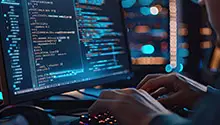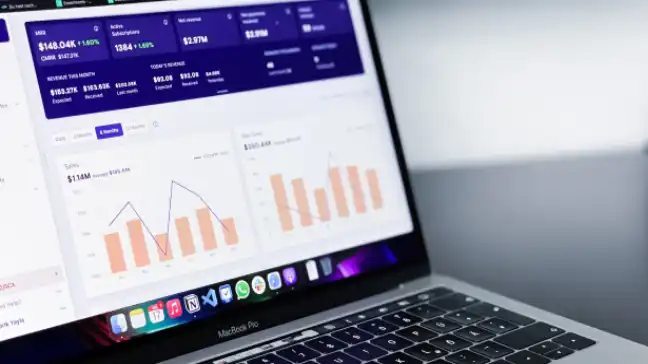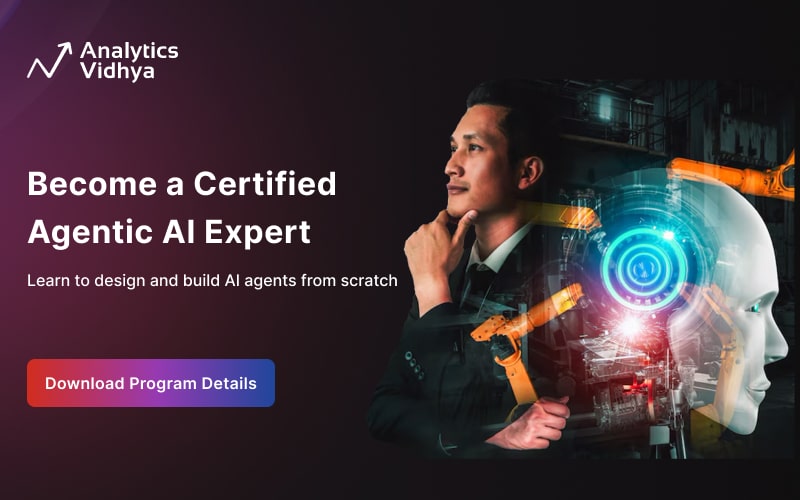In a recent YouTube interview, OpenAI’s CEO Sam Altman sat down with Varun Mayya to talk about how AI is changing the world. They discussed – how people are using AI to create amazing images, how jobs in design and tech are evolving, and why India is one of the fastest-growing markets for AI tools. Sam also shared his thoughts on whether prompt engineering is a real job, how AI will impact software developers, and even touched on a viral clip of Hayao Miyazaki reacting to AI art. It was a deep, honest, and fascinating conversation. Here are the most important insights from their chat.
Table of contents
- AI-Generated Images are Blowing Past Expectations
- India is Leading the AI Adoption Curve
- AI is Reshaping Jobs, Not Just Replacing Them
- New Jobs are Being Born, Starting with Prompt Engineering
- Democratization of Art is a Net Good, Despite the Discomfort
- Don’t Fear, Build Anyway
- Code Creation will be 10x Faster
- India’s IT Services Can Survive the AI Wave (If They Adapt)
- AI Agents Will Move from Passive to Proactive
- Legacy Companies that Ignore AI are at Risk
- AI’s Impact Has Been Powerful, But Less Sci-Fi Than Expected
- End Note
Insight 1: AI-Generated Images are Blowing Past Expectations
Altman spoke excitedly about OpenAI’s new image generation tools, emphasizing how their adoption has far outpaced initial predictions.
We will cross a billion total images in the not-so-distant future.
From brand design and UI prototyping to experimental 3D workflows, users are pushing the tool’s boundaries. One compelling use case Sam mentioned involved users generating a 3D object’s front view and then prompting the model to generate side, back, and height-map views, which are then converted into meshes and textures for use in rendering pipelines. This level of creativity, especially from non-technical users, underscores a key shift: AI isn’t just supporting creativity, it’s accelerating and augmenting it.
Also Read: OpenAI’s 4o Image Generation is SUPER COOL
Insight 2: India is Leading the AI Adoption Curve
Altman highlighted India as OpenAI’s fastest-growing market globally, a testament to the country’s deep engagement with AI technologies.
India was one of the first markets outside the US that really jumped on AI in a huge way.
He emphasized how Indian users are not just passive consumers but active contributors. Whether for small business automation, content creation, education, or coding, India’s developer and creator community is testing the edges of AI’s capabilities. It’s also a country where the demand for high-quality, affordable AI tooling is particularly strong, something OpenAI is paying attention to.
However, Altman acknowledged one challenge: cost. India’s massive potential for mass adoption is held back by pricing that doesn’t yet scale to local affordability.
We get feedback that our price point is too high for mass adoption… but we’re hard at work on more efficient models.
Insight 3: AI is Reshaping Jobs, Not Just Replacing Them
A recurring theme in the conversation was how AI is changing,not necessarily eliminating, jobs. Sam explained that AI tools still require human oversight, taste, and context management.
You still need someone to run the tool… it’s almost like being the manager of the tool.
In creative domains like video editing and UI design, AI speeds up workflows but doesn’t replace the human judgment required for quality output. In fact, with AI accelerating production, the bar for quality is rising. For instance, websites may be easier to build, but users now expect higher polish and functionality. This can lead to higher demand for creative professionals, even if the nature of their tasks shifts.
He compared this shift to when graphic designers moved from pen-and-paper to digital tools. That change didn’t eliminate jobs, it amplified creativity and productivity.
Insight 4: New Jobs are Being Born, Starting with Prompt Engineering
Altman shared a personal anecdote about being discouraged from studying computer programming because it was seen as a “hobby” job. Now, programming is one of the most lucrative and respected skills in the world.
He sees prompt engineering in the same light.
Before AI came along, there was no such thing as a prompt engineer… and people ridiculed the idea.
As with many new technological shifts, early adopters often face skepticism. But over time, the value becomes undeniable. Prompt engineering, while often mocked for being “just writing English,” is rapidly becoming a critical skill for interfacing with advanced AI systems.
Also Read: How to a Become Prompt Engineer?
Insight 5: Democratization of Art is a Net Good, Despite the Discomfort
Addressing concerns from artists and creators who feel AI diminishes the value of human craft, Altman offered a thoughtful perspective:
It’s upsetting, yes… but think about what it was like to create 30 years ago. It was much harder to express yourself or share content.
He acknowledged the bittersweet nature of rapid advancement. As AI reduces the barrier to entry in fields like design and video production, some traditional practitioners feel displaced. But the overall outcome, he argues, is overwhelmingly positive.
The world benefits when more people are empowered to create.
Sam compared it to the rise of platforms like YouTube, which allowed people with no formal background in media to become global creators, unlocking billions of hours of content, new careers, and fresh perspectives.
Insight 6: Don’t Fear, Build Anyway
One hot topic was the ongoing debate about “wrapper” startups, companies that build simple interfaces or features on top of foundational models like GPT.
Critics often say: “You’re just a wrapper around OpenAI.”
Sam’s response?
That used to be said about other industries too—like being just a wrapper on AWS… it’s easy to dismiss new ideas, but some of these wrappers are building real value.
He urged founders not to be discouraged by such labels. The truth is, innovation often looks thin or silly at the beginning. What matters is user value, business sustainability, and your execution, not whether you’re building from scratch.
Insight 7: Code Creation will be 10x Faster
When asked about the timeline for fully automated coding, Sam emphasized productivity over perfection.
I’m less interested in 100% automation and more in when coders become 10x more productive… and I think that could happen this year or next.
He noted that developers already report being 2–3x more efficient using tools like Copilot or ChatGPT. The real inflection point, he said, will be when engineers can go from idea to working product with almost no boilerplate.
OpenAI’s vision includes AI agents that can take a prompt like “build me a new feature” and return with a complete pull request.
Also Read:
- Vibe Coding with Devin 2.0
- Guide on Vibe Coding with Windsurf
- Cursor AI: Why You Should Try It Once?
Insight 8: India’s IT Services Can Survive the AI Wave (If They Adapt)
Sam was asked about India’s $250B IT services economy and how it might be affected by AI-driven code automation. His take was optimistic:
“The world wants way more software—and is about to get it.”
He referenced Jevons Paradox, the idea that increased efficiency leads to more demand, not less. AI might reduce the cost of writing code, but the world’s appetite for software will grow even faster, creating more work, not less.
“Someone who can write code at one value today will be able to write it at a much higher value tomorrow, with AI.”
Insight 9: AI Agents Will Move from Passive to Proactive
Sam is especially excited about autonomous AI agents, software that doesn’t just assist, but acts on your behalf. Right now, most agents are passive. You query them, and they respond. But Sam predicts a near future where agents take initiative.
You’ll ask a coding agent to build a feature—and it’ll ping you back later with the pull request.
He also mentioned use cases in consumer life—like ordering food or booking travel, where agents could handle repetitive tasks automatically.
Insight 10: Legacy Companies that Ignore AI are at Risk
When asked what advice he’d give to someone working at a slow-moving legacy company, Sam didn’t hesitate:
I’d probably leave. I’d want to be responsible for my own career success.
Exposure to the latest tools isn’t just a nice-to-have, it’s becoming a career necessity. Those stuck in bureaucratic systems may find themselves at a serious disadvantage in the years ahead.
Insight 11: AI’s Impact Has Been Powerful, But Less Sci-Fi Than Expected
In a surprisingly humble admission, Sam noted that AI hasn’t yet transformed society in the sci-fi way he once envisioned.
It’s just this crazy powerful tool… and life goes on mostly the same. I’m actually very happy about that.
Rather than a sudden, overwhelming disruption, AI is shaping our world quietly, augmenting work, unlocking creativity, and expanding what’s possible, one prompt at a time.
End Note
Sam Altman’s reflections offer a grounded yet inspiring take on the AI revolution. His message to developers, creators, and dreamers is simple: don’t wait. Use these tools. Experiment. Build things others might laugh at today, because those are often the ones that shape tomorrow. Whether you’re in India or anywhere else in the world, there’s never been a better time to create.
Keep following Analytics Vidhya Blog to stay updated with latest AI trends.







